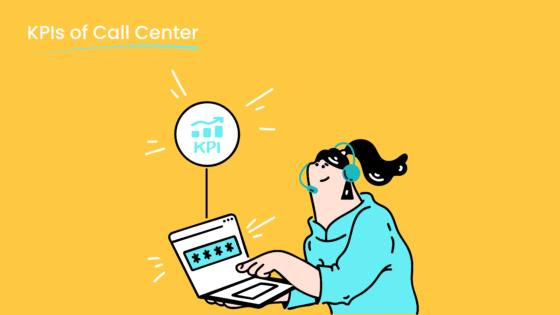Never Ignore CSAT in Call Centers Again

Customer satisfaction is the heartbeat of any successful csat call center. CSAT, a pivotal KPI, measures how well your services meet customer expectations. High scores not only elevate customer loyalty but also motivate agents and fuel business growth.
CSAT directly reflects service quality. Tracking it helps identify trends and resolve issues before they escalate.
Ignoring CSAT can have severe consequences. Statistics show that 91% of dissatisfied callers never return. On the flip side, happy customers are 38% more likely to recommend your services. Tools like Sobot’s csat call center solutions offer real-time insights to ensure your call center stays ahead in delivering exceptional service.
Understanding CSAT in Call Centers
What is CSAT and How is it Measured?
CSAT, or Customer Satisfaction Score, is a key performance indicator (KPI) that measures how satisfied customers are with your service. It provides a direct reflection of the quality of interactions in your call center. Measuring CSAT is straightforward and involves gathering feedback from customers after their interactions.
Here are three common methods to measure CSAT:
- Conduct short post-interaction surveys to capture immediate feedback.
- Calculate CSAT scores using this formula:
(Number of satisfied responses ÷ Total responses) × 100 - Track CSAT trends over time to identify patterns and areas for improvement.
For example, if 80 out of 100 customers rate their experience positively, your CSAT score would be 80%. This simple yet powerful metric helps you understand how well your call center meets customer expectations.
Why CSAT is a Key Metric for Call Centers
CSAT is one of the most critical KPIs for call centers. It directly impacts customer loyalty and retention. A higher CSAT score indicates better customer satisfaction, which leads to stronger relationships and repeat business.
Recent studies highlight the correlation between CSAT and first-call resolution (FCR) rates across industries. The table below shows how industries with higher FCR rates tend to achieve better CSAT scores:
| Industry | FCR (%) | CSAT (%) |
|---|---|---|
| Retail | 78 | 81 |
| Insurance | 76 | 80 |
| Health Insurance | 72 | 80 |
| Energy | 72 | 76 |
| Financial | 71 | 75 |
| Tech Support | 65 | 75 |
| Telco | 61 | 68 |

This data underscores the importance of resolving customer issues efficiently to boost satisfaction. Tools like Sobot’s Voice/Call Center can help you achieve this by offering features like intelligent IVR and real-time monitoring.
The Role of CSAT in Evaluating Customer Experiences
CSAT plays a vital role in assessing the overall customer experience. It provides direct feedback from customers, helping you identify strengths and weaknesses in your service delivery. Trends in CSAT scores reveal what strategies work and where improvements are needed.
For instance, a consistent rise in CSAT scores might indicate that your agents are excelling in resolving issues quickly. On the other hand, a decline could signal gaps in training or processes. By focusing on CSAT, you can foster customer loyalty and trust, which are essential for long-term success.
Sobot’s solutions, such as its omnichannel platform, enable you to gather and analyze CSAT data effectively. With features like unified workspaces and AI-driven insights, you can ensure every interaction contributes to a positive customer experience.
Benefits of Prioritizing CSAT in Call Centers

Strengthening Customer Loyalty and Retention
Focusing on customer satisfaction in your call center builds trust and loyalty. When customers feel valued, they are more likely to return and recommend your services. Studies show that prioritizing CSAT can significantly improve retention metrics. For example, businesses that emphasize CSAT have seen the average client lifespan increase from 18 to 25 months. Additionally, client satisfaction ratings improved by over 35%, while churn rates dropped by approximately 40%.
| Metric | Value |
|---|---|
| Average client lifespan | Increased from 18 to 25 months |
| Client satisfaction ratings | Improved by over 35% |
| Client churn rate | Reduced by approximately 40% |
| Correlation with agent skills | Directly correlated with improved client loyalty and service quality |

These numbers highlight the direct impact of CSAT on customer loyalty. Tools like Sobot’s Voice/Call Center help you achieve these results by offering features such as intelligent IVR and real-time monitoring. These capabilities ensure that every interaction leaves a positive impression, fostering long-term relationships with your customers.
Enhancing Agent Performance and Morale
When you prioritize CSAT, your agents benefit as much as your customers. High CSAT scores reflect that agents are meeting customer needs effectively, which boosts their confidence and morale. A recent industry report highlights that focusing on CSAT leads to measurable improvements in agent performance. Agents feel more motivated when they know their efforts contribute to better customer outcomes.
Sobot’s Voice/Call Center equips your team with tools like a unified workspace and AI-powered voicebots. These features simplify workflows, allowing agents to focus on delivering exceptional service. For example, real-time call tracking and monitoring provide actionable insights, helping agents refine their approach. This not only enhances their efficiency but also creates a more fulfilling work environment.
Driving Business Growth with Sobot’s Voice/Call Center
Customer satisfaction is not just a KPI; it’s a growth driver. A satisfied customer is more likely to become a loyal advocate for your brand. This advocacy translates into increased revenue and market share. By prioritizing CSAT, you create a ripple effect that benefits your entire organization.
Sobot’s Voice/Call Center plays a pivotal role in this process. Its advanced features, such as bulk outbound tasks and smart call routing, streamline operations and improve customer interactions. The platform’s 99.99% uptime ensures uninterrupted service, while global number availability allows you to expand your reach. These capabilities make it easier to deliver consistent, high-quality service, driving both customer satisfaction and business growth.
Tip: Investing in tools like Sobot’s Voice/Call Center not only improves customer satisfaction but also positions your business for long-term success.
Risks of Ignoring CSAT in Call Centers
Decline in Customer Satisfaction and Loyalty
Neglecting CSAT in your call center can lead to a rapid decline in customer satisfaction and loyalty. Customers expect their issues to be resolved quickly and efficiently. When these expectations are not met, dissatisfaction grows. Studies reveal that 32% of customers will leave a brand after just one bad experience. If they encounter two negative experiences, the likelihood of brand abandonment increases significantly.
Key performance metrics like First Call Resolution (FCR) and Average Speed of Answer (ASA) highlight the impact of poor service. A low FCR means customers must repeatedly contact your call center for the same issue, leading to frustration. Similarly, a high ASA indicates long wait times, which can erode trust. By ignoring these KPIs, you risk losing customers who value seamless and efficient service.
Sobot’s Voice/Call Center helps address these challenges with features like smart call routing and real-time monitoring. These tools ensure faster resolutions and improved customer satisfaction, reducing churn rates and fostering loyalty.
Negative Impact on Brand Reputation
Your brand reputation is closely tied to the quality of your customer experience. Ignoring CSAT can tarnish your image, as dissatisfied customers often share their negative experiences online. Research shows that businesses risk losing 22% of potential customers when a single negative article appears on the first page of search results. Additionally, nearly 3 out of 4 consumers trust companies with positive reviews, making customer satisfaction a critical factor in maintaining trust.
Negative publicity, poor service, and unresolved complaints can damage your brand’s credibility. A bad reputation not only affects customer retention but also impacts your bottom line. Sobot’s omnichannel solutions help you deliver consistent, high-quality service across all touchpoints, ensuring positive interactions that enhance your brand image.
Missed Opportunities for Operational Improvements
Ignoring CSAT means missing valuable insights that could improve your call center operations. High customer satisfaction often correlates with reduced callbacks and better resource allocation. For example, analyzing CSAT trends can help you identify areas where First Call Resolution needs improvement. This reduces the need for repeat calls and frees up agents to handle more complex issues.
Operational enhancements like callback technology and streamlined IVR navigation can also improve the customer experience. Sobot’s Voice/Call Center offers advanced analytics and AI-driven insights, enabling you to monitor KPIs like Average Handle Time and call abandonment rates. These tools help you optimize workflows, reduce inefficiencies, and create a more effective call center environment.
Note: Addressing CSAT proactively not only improves customer satisfaction but also strengthens your call center’s overall performance.
How to Track and Improve CSAT Effectively

Collecting and Analyzing Customer Feedback
Tracking CSAT begins with gathering actionable customer feedback. Surveys are one of the most effective tools for this purpose. They are easy to distribute, scalable, and provide both qualitative and quantitative insights. For example, you can use short post-interaction surveys to measure satisfaction immediately after a call. These surveys often include concise questions like, “How satisfied were you with your experience?”
To gain deeper insights, combine CSAT scores with open-ended responses. This approach helps you identify specific pain points in the customer journey. For instance, a low CSAT score might indicate unresolved issues, while detailed feedback can reveal whether the problem lies in agent performance or system inefficiencies. Leading organizations also correlate satisfaction data with operational metrics like First Call Resolution (FCR) to pinpoint areas for improvement.
Tip: Balance the length of your surveys to respect customers' time while still capturing meaningful data. This ensures higher response rates and more reliable insights.

Sobot’s Voice/Call Center simplifies this process by offering tools for real-time feedback collection and analysis. Its unified workspace consolidates customer interactions, making it easier to track trends and act on insights. By leveraging these features, you can enhance the customer experience and improve your CSAT scores.
Training Agents for Better Customer Interactions
Your agents play a pivotal role in shaping customer satisfaction. Training them effectively ensures they deliver exceptional service during every interaction. Focus on building their capabilities rather than relying solely on scripts. This approach fosters genuine proficiency and adaptability, which are critical for handling diverse customer needs.
A study revealed that organizations using continuous improvement loops reported a 10% increase in CSAT scores. Personalized development tracks also reduced agent turnover by 25% in the first year. Techniques like mentorship programs and collaborative learning further enhance agent retention and performance.
| Training Approach | Impact on CSAT and Retention |
|---|---|
| Focus on capability over scripts | Improves genuine proficiency |
| Continuous improvement loops | Reports 10% higher CSAT |
| Personalized development tracks | 25% lower turnover in first year |
| Mentorship programs | 30% higher retention among juniors |
Sobot’s Voice/Call Center supports agent training with features like real-time call monitoring and AI-powered voicebots. These tools provide actionable insights, enabling agents to refine their skills and deliver better outcomes. For example, smart call routing ensures that inquiries reach the most suitable agent, reducing transfer times and improving the overall customer experience.
Leveraging Sobot’s Voice/Call Center for Real-Time Insights
Real-time insights are essential for improving CSAT in your call center. They allow you to identify and address issues as they arise, ensuring a seamless customer journey. Sobot’s Voice/Call Center excels in this area, offering advanced analytics and monitoring tools that provide a comprehensive view of your operations.
For instance, the platform’s AI-powered voicebot resolves 80% of inquiries accurately, reducing inbound discussion volume by 20%. Its smart call routing and bulk outbound task features streamline workflows, enabling agents to focus on complex issues. These capabilities contribute to a 97% overall CSAT score and a 99% customer happiness rate.

By leveraging these tools, you can monitor KPIs like Average Handle Time and call abandonment rates in real time. This data helps you optimize processes, reduce inefficiencies, and deliver consistent, high-quality service. Ultimately, Sobot’s Voice/Call Center empowers you to transform customer feedback into actionable strategies that drive satisfaction and loyalty.
Why CSAT Should Be a Top Priority for Call Centers
Aligning CSAT with Business Objectives
Customer satisfaction is more than just a metric; it’s a strategic driver for achieving broader business goals. When you align CSAT with your call center’s objectives, you gain actionable insights that improve operational efficiency and customer loyalty.
Studies show that 77% of contact center leaders prioritize customer satisfaction as their main focus. This emphasis reflects the growing importance of delivering speed, convenience, and knowledgeable service—qualities valued by nearly 80% of American consumers. Metrics like First Call Resolution Rate and Operational Efficiency KPIs illustrate how CSAT impacts your call center’s success.
| Metric | Description |
|---|---|
| Customer Satisfaction Score | Measures overall customer happiness and loyalty, providing insights into service delivery. |
| First Call Resolution Rate | Indicates the efficiency of resolving customer issues on the first contact, impacting CSAT. |
| Operational Efficiency KPIs | Metrics that reflect the effectiveness of call center operations, directly influencing CSAT. |
Sobot’s Voice/Call Center helps you track these KPIs seamlessly. Its real-time monitoring and AI-powered analytics enable you to identify trends and optimize workflows, ensuring your call center delivers consistent, high-quality service.
Building a Customer-Centric Culture with Sobot
A customer-centric culture starts with prioritizing satisfaction at every touchpoint. When you focus on CSAT, you create an environment where agents and systems work together to meet customer needs effectively.
One in three customers will abandon a brand after a single negative experience. This statistic highlights the importance of delivering exceptional service consistently. Sobot’s omnichannel solutions empower your call center to achieve this by unifying communication channels and providing personalized interactions. Features like intelligent IVR and AI-driven voicebots ensure faster resolutions, reducing frustration and enhancing satisfaction.
By fostering a customer-first mindset, you not only improve CSAT but also strengthen your brand reputation. Positive experiences lead to word-of-mouth referrals and increased loyalty, creating a cycle of growth and trust.
Long-Term Benefits of Focusing on CSAT
Investing in CSAT delivers significant long-term benefits for your call center and business. Research shows that companies with strong customer satisfaction scores outperform their peers in the S&P 500 by 260 points over 16 years.
| CX Leaders | S&P 500 Performance | Laggards |
|---|---|---|
| +260 points | Over 16 years | -175 points |
These results demonstrate the ROI of prioritizing CSAT. Benefits include increased sales revenue, cost savings, and improved customer retention. Satisfied customers become advocates for your brand, driving referrals and enhancing market share.
Sobot’s Voice/Call Center supports this growth by offering tools like bulk outbound tasks and global number availability. These features streamline operations and expand your reach, ensuring your call center remains a key contributor to your business’s success.
Tip: Focusing on CSAT not only boosts customer happiness but also positions your call center as a strategic asset for long-term growth.
CSAT is a crucial metric for every call center. It provides a real-time measure of customer satisfaction, helping you evaluate interactions and improve operations. High CSAT scores lead to customer loyalty, reduced churn, and lower turnover costs. Neglecting this metric can result in dissatisfied customers and missed growth opportunities.
- Key benefits of prioritizing CSAT:
- Strengthens customer retention.
- Enhances agent performance.
- Drives sustainable business growth.
| Metric | Significance |
|---|---|
| CSAT | Evaluates customer interactions and guides improvements. |
| High Scores | Reflect successful service delivery and retention. |
| Low Scores | Indicate areas needing attention, like agent training. |
Sobot’s Voice/Call Center equips you with tools to track and enhance CSAT effectively. Features like real-time monitoring and AI-powered insights ensure your call center delivers exceptional service, fostering long-term success.
FAQ
What is the ideal frequency for measuring CSAT in a call center?
You should measure CSAT after every customer interaction. This ensures you capture real-time feedback and identify trends quickly. For example, post-call surveys or email follow-ups can help you track satisfaction levels consistently and make timely improvements.
How does CSAT impact agent performance?
High CSAT scores motivate agents by validating their efforts. For instance, agents who consistently achieve high satisfaction ratings often feel more confident and engaged. Tools like Sobot’s Voice/Call Center provide real-time feedback, helping agents refine their skills and deliver better outcomes.
Can CSAT help reduce customer churn?
Yes, prioritizing CSAT can significantly lower churn rates. Studies show that 32% of customers leave after one bad experience. By addressing dissatisfaction promptly, you can retain more customers and build loyalty. Sobot’s solutions streamline this process with features like smart call routing and real-time monitoring.
What role does technology play in improving CSAT?
Technology simplifies tracking and improving CSAT. Platforms like Sobot’s Voice/Call Center offer features such as AI-powered voicebots and analytics. These tools help you resolve issues faster, reduce wait times, and enhance the overall customer experience.
How can Sobot’s Voice/Call Center improve CSAT?
Sobot’s Voice/Call Center enhances CSAT with intelligent IVR, real-time monitoring, and AI-driven insights. For example, its smart call routing ensures customers connect with the right agent quickly, reducing frustration and improving satisfaction. Its 99.99% uptime guarantees uninterrupted service.
See Also
Essential Strategies for Effective Call Center Quality Management
Comprehensive Overview of QMS Principles for Call Centers
Best Call Center Analytics Tools to Use in 2024
Leading Reviews of Cloud Contact Center Services for 2024
Enhancing Call Center Efficiency Through Effective Monitoring
